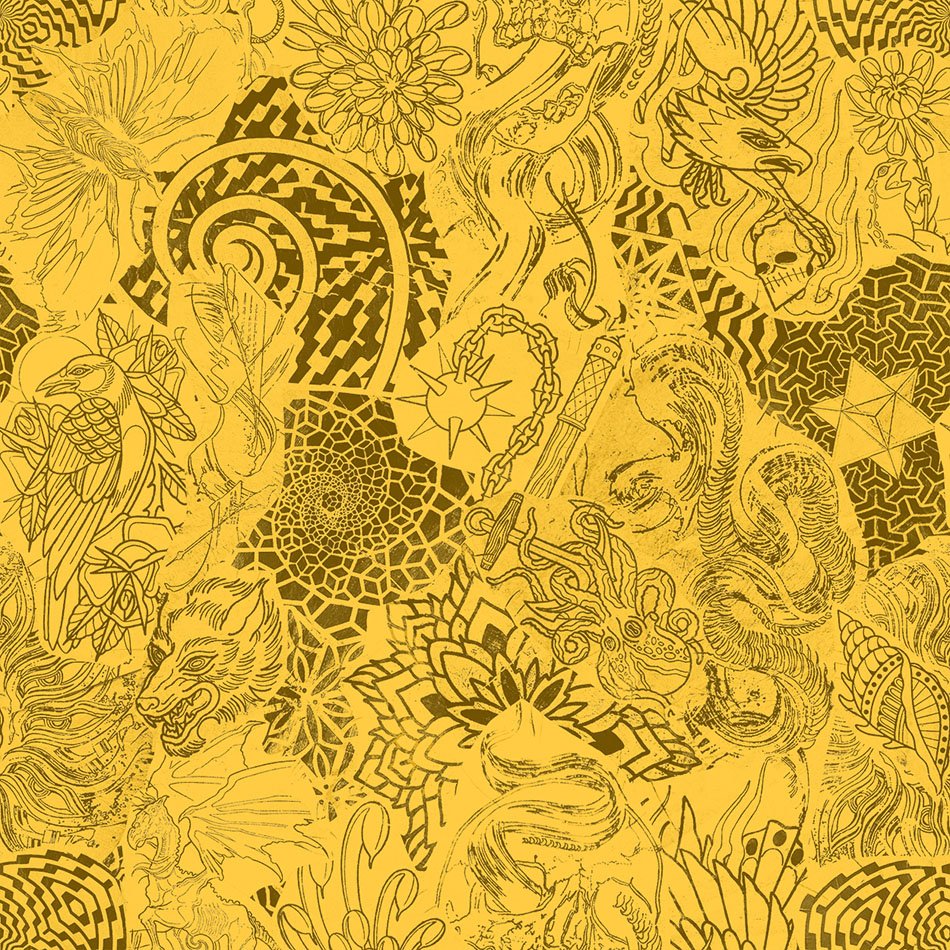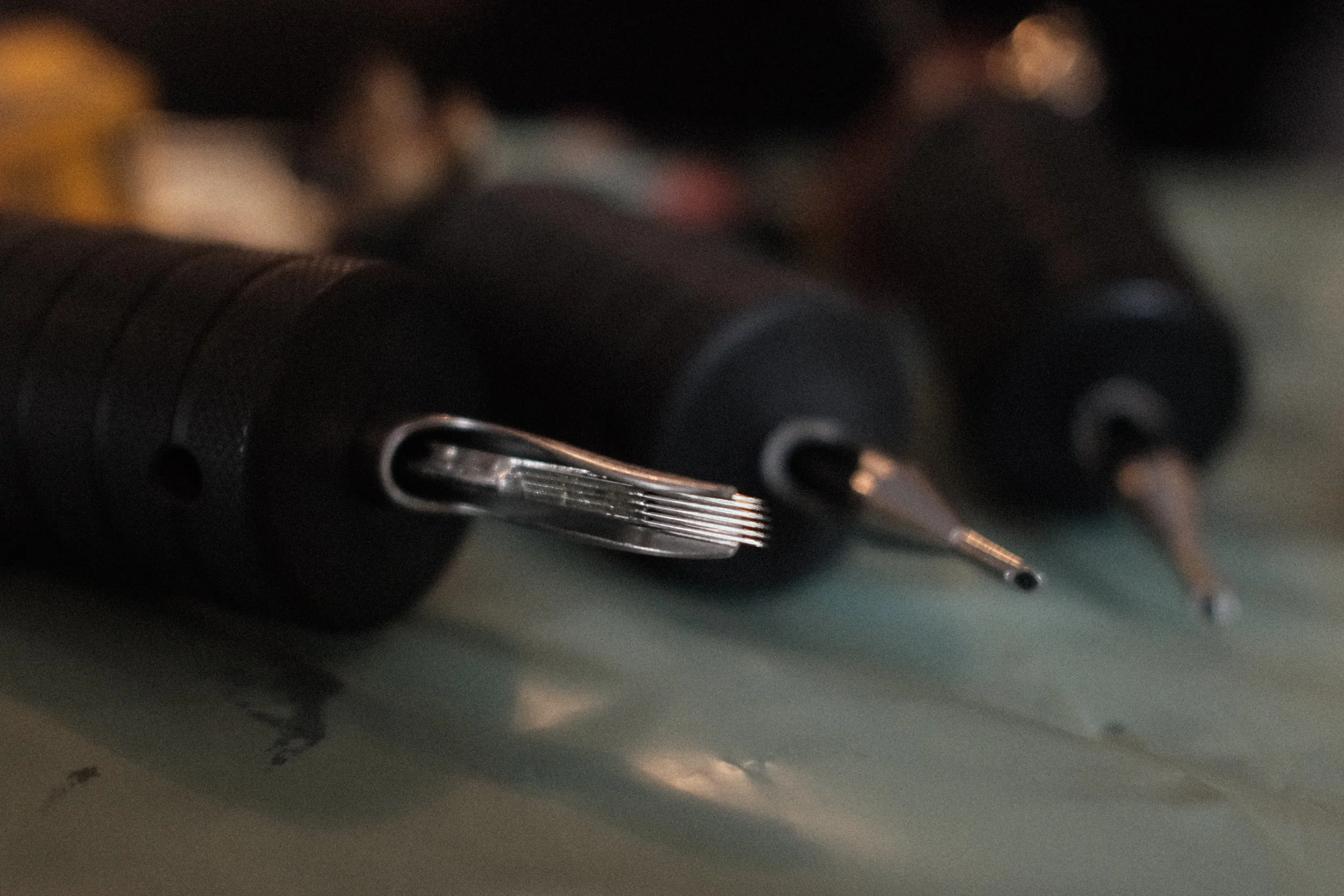
Everything you need to know before your tattoo session

Before your Tattoo
Try to be well rested, fed and hydrated. A good meal before your appointment can make a huge difference. Drinking plenty of water for the few days before can improve your skin and make the whole process easier, quicker and less painful.
Moisturising your skin for a week or so prior to your appointment can also help, especially in some of the tougher areas like knees, elbows or hands. Or if you tend to have dry skin.
Don't be hungover! This can really affect how your body responds to being tattooed and can increase pain, bleeding and can cause poor healing of the tattoo.
On the Day
Bring snacks and drinks - you'll want to keep your body fuelled during your session. If you're in for the full day - think about lunch too. there are a few corner shops near the studio and some good restaurants but a packed lunch is always a good shout (especially if you're veggie/vegan as the options are a bit limited nearby)
Think about what to wear. Don't worry - it's not a fashion show! Consider comfortable clothing that will allow easy access to the area being worked on. Also, tattooing can be messy! wear something you won't mind getting a bit of ink on.
The Process
We will start by getting you to fill out a consent form, don’t forget your ID in case we request it.
Then we’ll get you settled and your artist will show you the design and go over any details with you - now’s the time to get the design just right so don’t be afraid to ask for any changes. We would always rather you got a tattoo you really love and we factor in some extra time for any changes necessary
Next we size up and prepare a stencil. We always consider the longevity of your tattoo - We try to be honest about what we think will hold up in the long run. Remember, your tattoo is with you for life and we want it to still look good decades down the line! If we feel it is too small for the level of detail then we will suggest a bigger size, this is based on our experience and varies depending on design, style and placement.
Placing the stencil - finding the right spot is just as important as any other part of the process, your artist may suggest different placement, adjusting the design or even using some freehand to make it fit better. Once the stencil is applied, this is your last chance to adjust it before the tattooing process begins!
Freehand - sometimes it’s best to just draw directly on to the skin, your artist will discuss this with you beforehand. The freehand process allows for perfect gapfilling and is great for tricky spots and getting design to flow with the contours of the body. We tend to start with a lighter colour and then get darker and more detailed with each pass, checking in at each stage, until we are both totally happy with the design.
Your artist will then finish setting up while the stencil dries. All disposables are brand new for each client and sterilised equipment is unwrapped just before tattooing.
Then we try and get you in a good position for the tattoo, don’t be afraid to ask for an extra pillow or the temperature to be changed at this point - being tattooed is painful enough already so try to be comfortable in every other way!
We will check in and then get started!
Depending on the design the process may vary, but we will try to make sure youre as comfortable as possible throughout the tattoo. Make sure and ask if you need anything along the way.
Once the tattoo is finished, you can take a look and then we will let the tattoo rest for a moment before getting some pictures if you’re happy for us to do so.
You’ll then be wrapped up with clingfilm or second skin depending on the tattoo and given aftercare advice which is also available on the ‘Aftercare’ section of our website.
Lastly we will sort out payment
Cash is preferred, but Bank Transfer or Paypal are always an option too.

What to expect if you've never been tattooed before

The sensation of being tattooed varies massively depending on the person, the area being tattooed, the style, the equipment used, the artist and even just how you are feeling on the day. This makes it almost impossible to know how someone will find the pain before actually starting.
Having said that there are some areas that are known to be worse than others and your artist will likely advise you on the prior to tattooing a painful spot.
The above pain chart is an estimation and varies from person to person
The first 5 minutes can often be worse as your body adjusts to the pain, after that your brain releases various lovely neurochemicals which should take the edge off.
People often describe being tattooed as ‘like a cat scratch’ and tends to be more of a burning sensation than a sharp piercing or cutting one.
Many clients who are afraid of needles have no problem getting tattooed as the type of needle and feeling of a tattoo are totally different to that of an injection.
Some bleeding is to be expected but is usually hidden by the pigment, it may seem more apparent with lighter colours but is totally normal. You may also experience swelling depending on the style or area of the tattoo.
Solid areas of black or colour are more traumatic to the skin than fine lines or dots but your artist will always ensure to do the minimum of damage to the skin possible as this makes for a less painful tattoo that will heal better.

Pain management
Pain is an unavoidable part of the tattooing process and there is no such thing as a ‘pain free tattoo’. We are not sadists though and will do what we can to ease the process, often the best thing can be to be efficient and get the job done. Keeping your blood sugar up can really help so we encourage clients to bring sweet snacks and we always have fizzy drinks and lollipops on offer - it sounds silly but something about a boiled sweet on a stick works a treat!
We also offer Biotat ointment, these products contain clove extract - a safe and natural numbing agent that can help ease the process.
We will never push you beyond what you’re comfortable with so communication is key. Everyone experiences pain differently so there is no shame in letting us know if you’ve hit your limit.
Numbing cream
Generally we advise against numbing cream for a number of reasons:
It can aggravate this skin before tattooing even begins - numbing cream contains substances designed to help the anaesthetics penetrate the skin’s surface and these often lead to redness, swelling and a change in the texture of the skin which can make tattooing more difficult. This in turn makes the process take longer and thus more painful.
It wears off - if the piece takes longer than the effective time of the anaesthetic then the pain all hits at once when it wears off. As your body hasn’t had time to adjust and release the appropriate neurochemicals, this often leads to people tapping out at this point.
It can lead to poor healing of the tattoo - especially with colour work, it can make colours dull and desaturated.
There are a lot of fake products on the market, these can lead to some horrible results! If you are buying numbing cream be extremely careful to get it from a reputable source.
If you are considering using numbing cream, always discuss it with your artist. Turning up with it already on could lead to your appointment being cancelled and you losing your deposit. There are some occasions where we may recommend numbing cream but this should always be decided beforehand.
Cover-ups
We also offer cover-up tattoos.
Depending on what the old tattoo is, it's age and placement, a cover-up can be a great way to get rid of a tattoo you're no longer happy with. There is almost always some compromise with the design of a cover up so these projects are carefully considered and always require an in person consultation.
Usually expect a cover-up to be larger, bolder and darker than the original tattoo. At Six Hands we love the challenge though, and our tattoo artists are always keen to try and work out an ingenious way to make a piece you'll love!
Sometimes we may recommend some laser removal sessions before to lighten the existing tattoo but this would be part of the discussion during your consultation.

Tattooing over scars
We are often asked about tattooing over scars and feel that it is important for clients to understand some of the science and anatomy behind the process.
Essentially during a tattoo, the goal is to penetrate the epidermis (outer most layer of skin) and saturate the ink in the dermis. This layer had cells stacked vertically next to each other, this allows the ink to stay in place between the cells and keep your tattoo where it's supposed to be.
When working over scars, this dermal layer is made up of scar tissue which doesn't have the regular alignment of cells - meaning that how the skin holds the ink becomes less predictable. It could be that it stays perfectly, but it could also drop out/disappear or blow out/migrate.
As scars age this becomes more predictable so it is always recommended to leave them as long as possible before tattooing, preferably a scar should no longer be red and at least a year old.
The chosen tattoo design is also important and a design that is more forgiving of some ink loss or migration is always a good idea. For example - tattooing writing over a scar where any defects will be obvious and make the tattoo illegible is not recommended.
Allergies, moles and other skin conditions
Occasionally allergic reactions can occur during tattooing but these are very rare and almost always avoided with good communication and planning. It's is very important that you tell your artist about any allergies you have prior to the tattoo, either on the consent form, or in the case of severe allergies, during the initial enquiry.
At Six Hands Tattoo we always have nitrile gloves available to avoid the risk of latex reactions.
Another risk can be red based pigments, if you have ever had a reaction to red hair dye or other pigments then it is worth being careful. However, these reactions only tend to occur with cheap or counterfeit pigments and all the materials used at Six Hands are top quality, tried and tested and only from reputable suppliers.
We tend to avoid tattooing over moles and birthmarks as it can be important to be able to see any changes to these areas of the skin in the future.
Other conditions such and Eczema and Psoriasis can also effect the tattooing process and these areas should be avoided as tattooing can aggravate these conditions and cause bad healing, flare ups and other issues.
This doesn’t mean you can’t get tattooed if you have any of these conditions, but it is always best consult your artist beforehand so you can get the best results possible.
If you have any questions about the information in this section, please get in touch via email and we will do our best to help answer them






